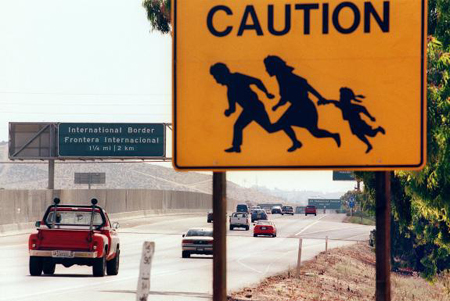In order to supplement my unit on migrations and immigrations--specifically our reading of Urrea's THE DEVIL'S HIGHWAY and Francisco Jimenez's THE CIRCUIT--I have searched for several websites that would provide historical context for my students. Most of my students think of Mexican immigration as a singularly contemporary issue without having any historical knowledge of the US/Mexico border relationship. To fully grasp the gravity of what we read in Urrea's and Jimenez's books my students have to have some background regarding the state of border relations and crossings.
This website offers some details about various aspects of los braceros and the bracero program which invited thousands of Mexican farmworkers into the United States to work on farms in the Southwest. My guess is that most of my students will be surprised to learn that there was a span of time during which it was convenient for the US to invite Mexican laborers into the country--that Mexican and Central American people did not all of a sudden decide to become criminals and illegally cross the border.
Along with increased understanding of the migrant worker system, I would also like to engage the students in a critical discussion of the terms used to discuss this issue: border, illegal, alien to name a few. I am including this "Borders and Identity" site as a supplement from which I would pull excerpts to pose critical thinking questions about the terminology in place.
Finally, I believe that one of the most important ways to engage our students is through the use of visual images. This Smithsonian sponsored site has several images of the living and working conditions of braceros and their families. Clicking on these images sends the student to a Smithsonian Institute website that offers more in-depth information about that particular image.

No comments:
Post a Comment